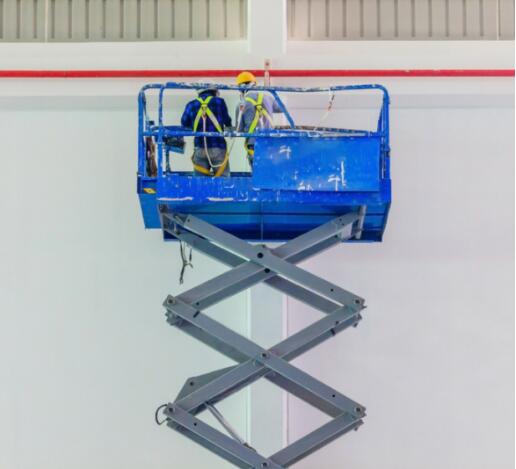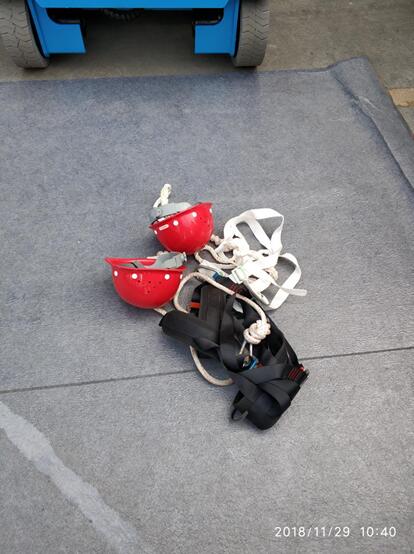Working at heights on equipment always comes with risks. Falls continue to be the leading cause of death in the construction industry and one of OSHA’s top ten most serious safety violations. OSHA usually requires a fall protection system, like a harness and lanyard, anytime a fall of 6 feet or more is possible.

But that leaves the question, “do you need a harness on a scissor lift?” The debate about when to use a fall protection harness on scissor lifts has been around for a while, and it isn’t going away anytime soon. Scissor lift operators are often caught in the middle of the argument between safety and efficiency, wondering, do you need a harness in a scissor lift? Some say yes to be safe, others say it’s not necessary at all. So which is it? Find out!
Scissor Lift Fall Protection Requirements
Do you need a harness on a scissor lift? While OSHA does not require scissor lift workers to wear a fall protection harness or other PFRS, that doesn’t mean you shouldn’t. After all, there are numerous hazards associated with scissor lift activity. Given the risks scissor lift workers encounter, all operators are required to make sure scissor lifts are equipped with a guardrail system, according to OSHA regulations 29 CFR 1926.451(g) and 29 CFR 1910.29(a) (3) (vii). A guardrail device is one of the most important elements of effective scissor lift fall protection. Every scissor lift operator should make sure that some type of guardrail is available before working. If it isn’t, immediately notify your supervisor. Without a guardrail, scissor lift fall protection will suffer, making accidents and injuries more likely.
Why aren’t scissor lift workers required by law to have a fall protection harness? The answer, existing safety rules. According to the two previous guidelines, all scissor lift operators should:
– Ensure a guardrail system is in place and stable before working.
– Position the scissor lift to avoid overreaching away from the work platform.
– Always stand on the work platform, not the guardrails.
– Keep a firm stance with both feet on the platform floor.
Those are OSHA’s basic rules for scissor lift fall protection. However, individual companies or job site rules might require the use of a PFRS or some type of scissor lift fall protection harness.
If you are required to wear one for any type of scissor lift operation, abide by the local laws and regulations. While OSHA doesn’t make “blanket” guidelines for scissor lift workers, failing to adhere to on-site safety rules can still result in penalties and fines.

When Do You Need a Harness in a Scissor Lift?
Scissor lift operators need to wear a harness and attached lanyard when there isn’t a guardrail system in place, it isn’t adequate enough, or if the worker leaves the safety of the work platform.
So, the rule states that it’s one or the other. If there’s an adequate, fully functioning guardrail system, scissor lift workers don’t need a harness. However, if the guardrail system is lacking, additional fall protection is needed. Workers must have one or the other for effective scissor lift fall protection. If you have access to a guardrail system and wear a harness, that’s great – it’s always better to go the extra mile with your scissor lift fall protection measures.
If a scissor lift comes with attachment points, it’s best to contact the manufacturer for their instructions and recommendations for when the tie-off points may be necessary to use.
Is a Scissor Lift Harness Ever Unsafe?
When using a fall protection harness and lanyard for a scissor lift or aerial lift, it’s important to understand how to use them properly and safely.
If an operator were to fall out of the scissor lift platform, because they were either reaching too far or standing on the guardrails, the force from the fall and reaching the end of the lanyard could cause the lift to tip over. The lanyard could also cause the fallen worker to swing back towards the lift and come into contact with it.
While scissor lift fall protection is usually always a safe bet, it’s important for workers to only use a harness and lanyard that is made for a scissor lift or aerial work platform and is installed properly to the correct attachment points.
Dealer or Architect?
We will help you provide the best material-handling solution for your next customer or project.
Contact Us:
inquiry@quentin-lift.com